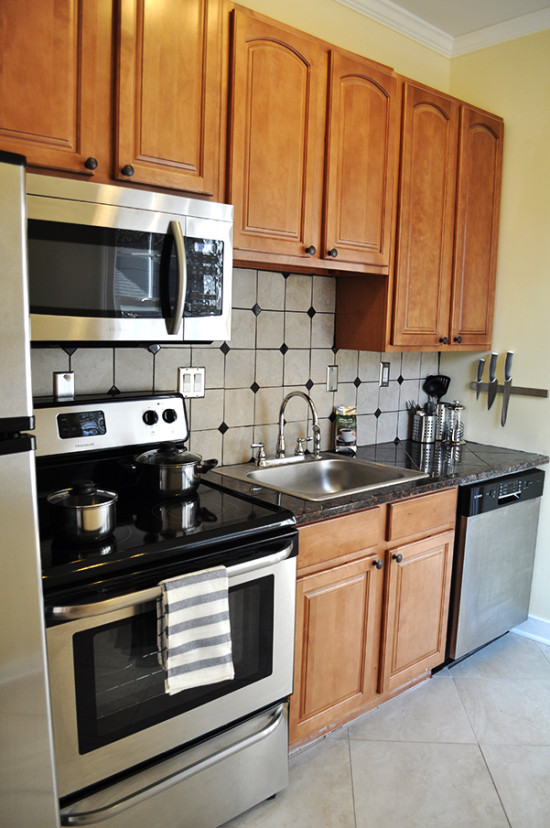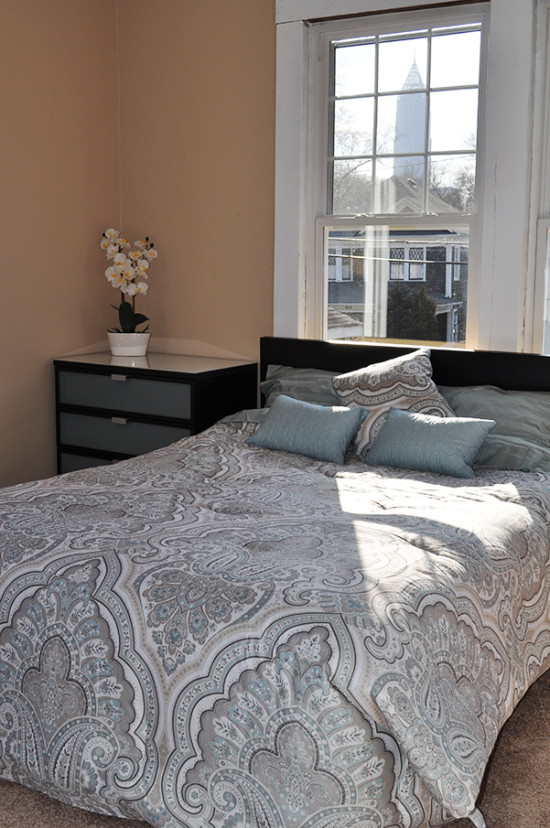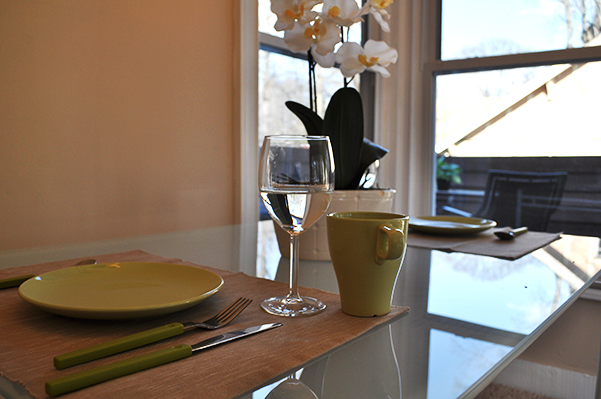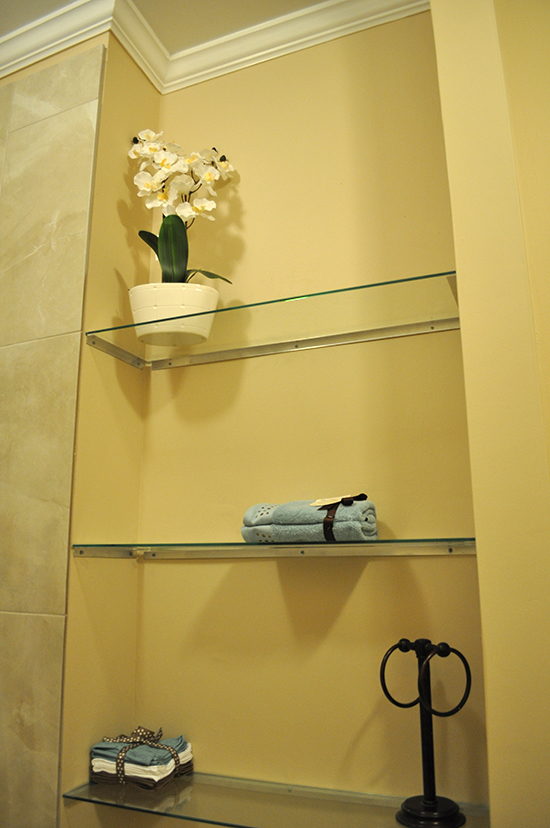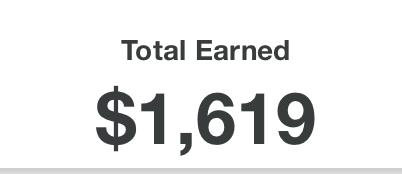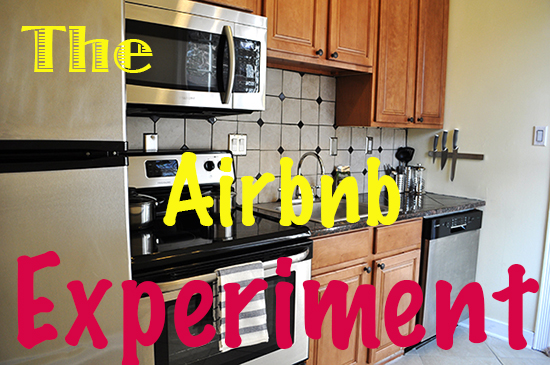
This article is Part 1 of The Airbnb Series. When you’re done, check out Part 2, Part 3, and Part 4.
“I wonder if …”
The greatest adventures of my life usually begin with that phrase.
When I say “greatest,” I don’t necessarily mean “best.” Sometimes I mean “weirdest-smelling” or “insanely-profitable” or “almost-gave-me-malaria.”
- “I wonder if I could start my own business …”
- “I wonder if I can really resist ever working for someone else …”
- “I wonder if I can eat this??”
(I say that last line way too often, usually accompanied by: “Hey, smell this. It hasn’t spoiled yet … right? Riiight?“)
The latest “I wonder,” however, is relatively mild — all things considered.
It won’t involve cross-country trips or cross-contamination or even cross-dressing. It won’t land me on the nightly news. And it won’t hold any potential for billionaire profits, but it also offers limited downside.
You see, I’m a landlord. I recently finished renovating one of my apartment units.
Pre-renovation, it rented for $700 per month. Post-renovation, I can rent it for about $1,100/month.
But then I started thinking, “I wonder if …”
“… I could boost my profits by becoming an Airbnb host?”
And that’s how The Airbnb Experiment began.
How I ‘Accidentally’ Started a Vacation Rental Business
(Brief background for new readers: My partner and I own seven rental units across five buildings. You can read about them here, here, here, here and here.)
As soon as “I wonder if …” popped into my mind, my knee-jerk reaction was to focus on the drawbacks of managing a vacation rental business.
- More turnover.
- Higher vacancy.
- Extra management.
- Upfront costs of furnishing.
- Higher guest expectations (full-service).
I observed those objections arising. And then I asked myself, “How can I battle these?”
#1: Separate “Investor Paula” from “Manager Paula.”
I’ll track my hours and ‘pay myself’ for this position.
This is crucial. Many people think they own an investment, when they really own a job.
The only way to successfully invest in real estate is to make a profit after paying yourself (or paying someone else).
#2: Commit.
I’ll commit to this experiment for at least 6 months, if not a year. This way, I can measure vacancy and turnover across the span of several seasons.
#3: Budget.
I’ll furnish the apartment on a $2,000 budget – including paying myself for my labor. (I’m not giving my time away for free!)
Here’s what happened next:
Step 1: Shopping Spree!
I’m shocked at how much stuff – lots and lots of stuff – is needed to furnish an apartment.
Yeah, there’s the obvious furniture:
- Mattress/boxspring
- Bed frame / headboard
- Sheets, comforter, pillows, duvet
- Dresser
- Couch, slipcover
- Window treatments
- Coffee table
- Bedside end table
- Reading lamp
- Kitchen table and dining-room chairs
- Plates, bowls, spoons, forks, knifes
- Pots, pans
- Mugs, glasses
- Coffeemaker
But after I began furnishing the space, I realized there was a LONG list of things that I hadn’t considered –
- Trash cans for kitchen/bath
- Hangers
- Dish towels
- Baking trays
- Placemats, potholders, can opener. (Who buys a can opener? Isn’t that something everyone just has?)
- Bath mats, towels
- Cable TV! *Forehead slap!* I forgot that most people expect a TV …
- … along with a TV stand (that’s a furnishing category?), cable box, remote control …
- Oh yeah, and wireless internet!! Doh!
I set up the apartment with all of the “Consumer Disposables” that create a good customer experience in a vacation rental, such as:
- Toilet paper
- Hand soap for kitchen/bath
- Shampoo, conditioner, body soap
- Coffee, tea
- Dishwashing detergent
- Sponges and paper towels
- Laundry detergent and fabric softener
- Salt, pepper, cooking oil
- Iron / Ironing board
- Hairdryer
And after all of this, after 5 solid days of carefully thinking through every possibility, my first few guests began requesting items that I still hadn’t considered, such as a plunger and toilet brush.
Bottom line: It takes a TON of stuff — especially small stuff — to create a home-away-from-home experience.
Step #2: Photograph the Space.
I have a new appreciation for interior photographers. After lots of trial-and-error, here’s what I came up with:
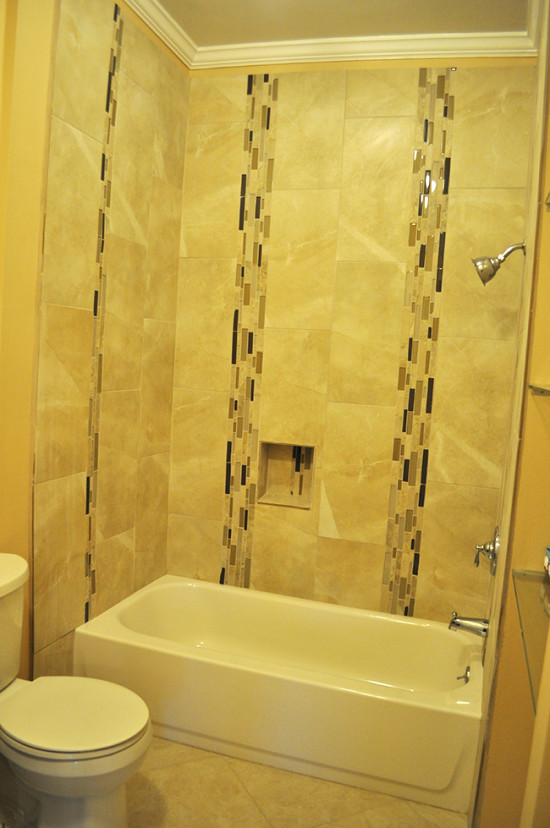
Pro tip: Close the toilet lid before taking a photo of the bathroom. It gives the image a more pulled-together look.
Step #3: List the Space.
Although I’m referring to this as the “AirBnb Experiment,” I’m actually offering the apartment on two websites – AirBnb.com and VRBO.com.
Because I’m slightly a perfectionist, I scanned the neighborhood competition and wrote a listing that could compete head-to-head with the best of them.
I also added a map with pinpoints at all major restaurants, bars, shops, salons, gyms, etc., within easy walking distance. (Which are a LOT.)
Step 4: Develop Procedures
Next, I developed a checklist of check-in, check-out and turnover/vacancy procedures.
I don’t have to rely on my (unreliable) memory. I can just follow my checklist.
The checklists are too long to reprint in full here, but they include:
- Walking through the unit after check-out to make sure nothing is damaged/stolen. (My checklist features an inventory of all the stuff within the apartment.)
- Refilling any “consumer disposables” that are low. (Coffee? Sponges? Soap?)
- Washing the linens, vacuuming, mopping, emptying the trash, and overall cleaning up the unit after check-out. (I’m thinking of hiring a company that will handle this step.)
Step 5: Create a Standard Guest Greeting
I created a page that welcomes guests and highlights the amenities of the apartment.
I tried to anticipate any FAQ’s, and answer all of these on a pre-written page. (Here’s where you’ll find the remote. Here’s the wireless internet password. Here’s how the ceiling fan works.)
This step is more for my benefit than the guests.
You see, I want to run a business – not have a business than runs me. The best way to execute that is to automate, by creating checklists and procedures that I can give to anyone who steps in to fill my shoes while I’m traveling.
When I create an FAQ page, I’m automatically giving my guests one fewer reason to call me.
Less work and more money? Yes, please. 🙂
6 Lessons I Learned as an Airbnb Host
After all this, what lessons or conclusions have I learned?
#1: Holy moly, humans need a lot of crap.
Like seriously, when/why/how did we as a society get to the point in which we need so much CRAP to maintain our existence?
I’m not finger-pointing, as I’m as equally guilty of this as anyone. I maintain a spatula and dish towels and sponges and dishwashing detergent in my own home.
But can we just take a moment to reflect on the sheer volume of possessions that we need in order to have a functioning home? It’s kinda astounding, when you step back and think about it.
I’m not moralizing; I’m just … shocked, really.
It’s not something you think about, until you have to buy all of this junk at the same time.
#2: Know the difference between a commodity business vs. a service business.
Running a vacation rental business is waaayyyyyy different than simply offering a rental property.
I had long suspected this to be true, but the experience of going through the motions really brought that lesson home.
When you invest in rental properties, you’re offering a commodity. I renovate old fixer-upper homes (manufacturing) and sell it in bulk, one-year time increments (wholesale).
When you run a vacation rental, you’re offering a service. If someone wants more towels, they’ll call you.
#3: Competitive pressures skew the market.
When you’re offering a rental property, you’re competing against other investors.
But many of the other hosts on Airbnb aren’t investors. They’re owner-occupants (or renter-occupants) who list their personal home, and spend the night at a friend’s house, to make some extra cash.
Because they’re not concerned with their ROI, they can under-price the competition. This exerts downward pressure on the prices.
It’s great for guests, but it limits the upside for hosts – especially those of us who are full-time investors.
#4: Taxes suck.
When you offer a short-term rental, you need to pay the city 8 percent sales tax and an additional 8 percent occupancy tax (the same types of taxes that hotels charge.) That’s a 16 percent additional bite from your profits. Wowza!
(Tax rates vary from city-to-city, but suffice to say that it’s a LOT.)
I hope those conclusions don’t sound too negative. There’s a huge upside to vacation-rental hosting, as well:
#5: It’s super-fun.
Most of my money-making efforts happen in front of a laptop, and sometimes, I just want to tear myself away from a computer screen.
Managing a vacation rental (and rental properties in general) give me awesome variety. I can interact with flesh-and-blood people, rather than stare at pixels.
And it’s not like I’m in traditional “customer service,” interacting with grumpy people. I’m hanging out with people while they’re on vacation. They’re relaxed, they’re in a great mood, and there’s here to have fun.
#6: It’s the best of global travel … under my own roof.
One of my favorite aspects of traveling is meeting people from around the world.
By running a vacation rental, I can capture that same experience – in my own building.
My first guest, for example, was born in Jamaica and shares my love for exploring the Caribbean islands. She and I chatted at length about our travels in that region, swapping notes about our favorite off-the-beaten-path coves and beaches.
It’s the same type of conversation that I’d have with a random traveler at a hostel or a cafe … the type of international human connection that I love most about travel.
And I dig that it happens under my own roof, and that I get paid for doing it.
But that said, a business is a business, and it needs to turn a profit.
How lucrative has this been so far?
First, let’s set an income goal:
Price on a One-Year Lease: $1,100/mo
(Less vacancy projection for long-term rental: $100/mo)
Benchmark for Comparison: $1,000/month
Vacation Rental Additional Expenses:
$100/mo utilities (including electricity, gas, cable, internet)
$40/mo consumer disposables (refilling the sponges, soap, shampoo, etc.)
$160/mo management (8 hrs/month at $20/hr)
$250/mo sales and occupancy tax (rough ballpark)
Projected minimum revenue needed to break-even: $1,550/mo.
In other words – unless we hit that base rate, it’s more sensible to rent this unit to a long-term tenant on a one-year lease.
In the month of March, I’ve earned $1,619. That’s a total “profit” of $69 for the first month (after paying myself for my time).
But as you can see, these are all estimated numbers. The REAL data will come over the span of the next few months, as I:
• Track REAL hours
• Track REAL receipts
• Pay REAL utility bills
So – Is a vacation rental more (or less) lucrative than a long-term lease?
Stay tuned. ☺
Update: Check out Part 2 of The Airbnb Series here, followed by Part 3 and Part 4. Or download all 4 parts in this FREE guide at the beginning of the post!
Use this estimator tool to find out how much you could earn as an Airbnb host.
Airbnb makes it easy to put your extra space to work for you. Become a host today, and you can start boosting your income!
